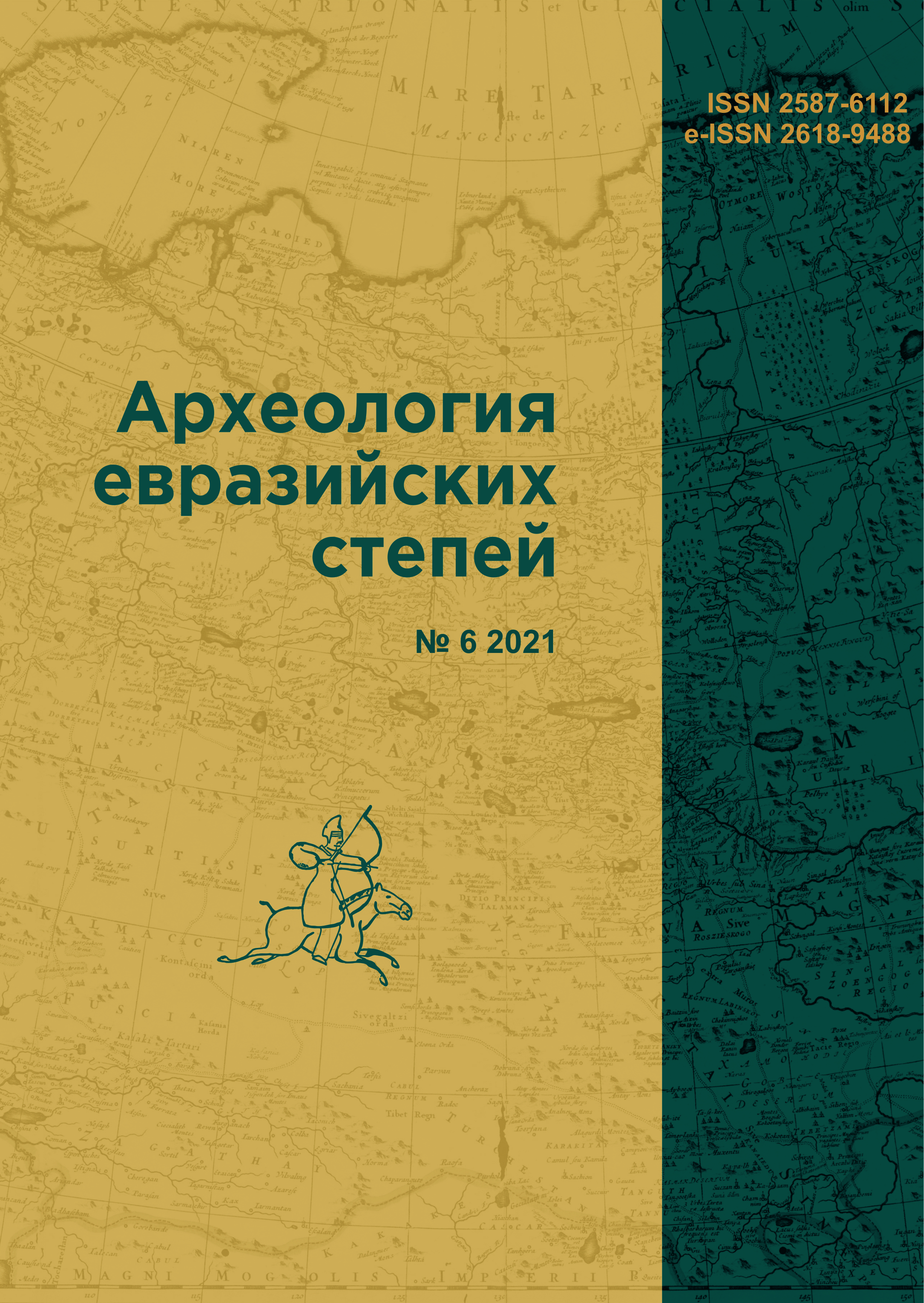EXPERIENCE OF THE RESTORATION OF EPIGRAPHIC MONUMENTS AND ARCHITECTURAL DETAILS FROM THE COLLECTION OF BOLGAR STATE HISTORICAL AND ARCHITECTURAL MUSEUMRESERVE
DOI:
https://doi.org/10.24852/2587-6112.2021.6.302.307Keywords:
archaeology, restoration, lapidarium, Golden Horde, natural stone objects, epigraphic monuments, Bolgar State Historical and Architectural Museum-ReserveAbstract
The paper describes the experience of treatment during the preparation of stone objects from the collection of Bolgar State Historical and Architectural Museum-Reserve, which consist of 200 storage units, for museum display. The collection includes gravestones of the 13th-14th centuries decorated with ornamental carvings, inscriptions, monochrome painting, and fragments of architectural decor made of limestone, tuff and plaster. The objects date back to the period of the Bolgar ulus being part of the Golden Horde. Most of them are in poor condition and require restoration and conservation. Besides, the museum cannot provide a complete display of the collection in the existing exposition conditions. In order to provide the conditions for collection display, a lapidarium is being constructed in the territory of the Bolgar Museum-Reserve. Preservation of cultural heritage sites requires joint efforts by various specialists - conservators, curators, and archaeologists. Along with the development of an exposition concept and its spatial and architectural solutions, a cycle of conservation treatment of the objects is performed, which is described in this paper.
References
АгееваЭ.И. Консервация и реставрация скульптуры из камня. Учебное пособие. М.: РГГУ, 2003. 81 с.
Айдаров С. С. Исследование и реставрация памятников монументального зодчества Болгара // Город Болгар. Монументальное строительство, архитектура, благоустройство / Отв. ред. Г.А. Федоров-Давы¬дов. М.: Наука, 2001. С. 5-l50.
Антонян А.С. Реставрация скульптуры из камня. Методические рекомендации. М.: СканРус, 2006. 100 с.
Булатов А.Б. Булгарские эпиграфические памятники XIII-XIV вв. Правобережье Волги // Эпигра¬фика Востока. 1963. T. XVI. С. 56-71.
Волга от истока до Каспия: путеводитель на 3 языках: рус., фр. и нем. М.: т-во скоропеч. А.А. Левен- сон, ценз. 1903. 96, XXXI с.; 12х20
Калинин Н.Ф. Булгаро-татарские эпиграфические памятники как исторический источник // Тезисы докладов на конференции по археологии, древней и средневековой истории народов Поволжья в Каза¬ни в 1956 г. / Ред. А. П. Смирнов, Н. Я. Мерперт. М.: ИИМК, 1956. С. 25-31.
Корнилов П.Е. К изучению эпиграфического резного камня болгаро-татарской эпохи // МОРРП ТАССР. Казань, 1929. Вып. 3. С. 1-10.
Макарова А.С. Полевая консервация археологических находок из камня, к вопросу о методиче¬ской обеспеченности // Журнал Института наследия 2018. №1 (12). URL: http://nasledie-joumal.ru/ru/ joumals/179.html (дата обращения: 30.03.2021).
Малов С.Е. Булгарские и татарские эпиграфические памятники// Эпиграфика Востока. 1947. T. I. С.38-45.
МИРАС-НАСЛЕДИЕ. Том 1. Татарстан - Крым. Город Болгар и изучение татарской культуры в Татарстане и в Крыму в 1923-1929 годах: в 3-х томах / сост. и отв. ред. С.Г. Бочаров, А.Г. Ситдиков. Казань: ООО «Астер Плюс», 2016. 580 с.
Мухаметшин Д.Г., Хакимзянов Ф.С. Эпиграфические памятники города Булгара. Казань: Таткниго- издат, 1987. 128 с.
Мухаметшин Д.Г. Татарские эпиграфические памятники. Региональные особенности и этнокуль¬турные варианты / Археология евразийских степей. Вып. 6. Казань: Институт археологии АН РТ, 2008. 132 с. Илл.
Мухаметшин Д.Г. Г.В. Юсупов и проблемы татарской эпиграфики // Поволжская археология. 2014. №4 (10). С. 154-177.
Юсупов Г.В. О некоторых булгарских эпиграфических памятниках// Эпиграфика Востока. 1953. T. VII. С. 26-30.

Downloads
Published
How to Cite
Issue
Section
License
Copyright (c) 2021 Makarova Anastasia S., Kaplan Polina Yu., Kotov Roman V., Fedan Pavel V.

This work is licensed under a Creative Commons Attribution-NonCommercial 4.0 International License.







